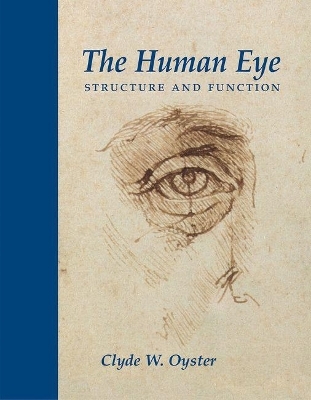
The Human Eye
Oxford University Press Inc (Verlag)
978-0-87893-644-1 (ISBN)
Published by Sinauer Associates, an imprint of Oxford University Press.
We are a highly visual species. Most of our information about the world comes to us through our eyes and most of our cultural and intellectual heritage is stored and transmitted as words and images to which our vision gives access and meaning. Knowing more about our eyes and vision is, therefore, one path to better understanding ourselves. And, as it happens, the human eye is a fairly representative vertebrate eye; knowing more about it tells us much about the eyes of other animals and about how they view the world and us.
In more practical terms, a better understanding of the human eye allows us to intervene more intelligently and purposefully as we attempt to correct, modify, or ameliorate disorders of the eye brought on by trauma, disease, or senescence.
Understanding the eye requires an exploration of the relationship between its structure and its function--that is, a consideration not only of how the eye and its parts are constructed, but also of what they do and how they work. Thus, this book considers both the structure and the function of the human eye and how they are related, often using functional issues as a guide to the most meaningful and important features of the anatomy. Limited use of technical terms from the various disciplines that relate to the eye, definitions of terms as they are used, a glossary, and suggestions for additional reading are all included to make the text accessible to readers for whom the subject is new. Boxes interspersed throughout the text discuss methods used to study the structure of the eye and surgical procedures used to alter its structure in beneficial ways.
In addition to the main theme of structure and function, several subthemes make the general point, in different ways, that the eye and our understanding of it are dynamic and changing. Change on a geological timescale is represented by the evolutionary history of eyes generally and the human eye's place among the diversity of eyes in the animal kingdom; these issues are discussed in the Prologue. Change within a human lifetime begins with a chapter about the early stages of development in utero, continues throughout the book with the developmental histories of different parts of the eye, and concludes, in the Epilogue, with accounts of postnatal growth, maturation, and senescence. Change throughout human history in the way we have understood our eyes is another story, fragments of which are contained in a series of "vignettes" about some of the people and ideas that have influenced human thought about the eye over the past several thousand years.
The Human Eye: Structure and Function appeals to a wide audience, including all scientists who are interested in the eye and in vision; optometrists and ophthalmologists; and optometry students and ophthalmology residents.
Clyde W. Oyster is Professor Emeritus in the Department of Physiological Optics of the School of Optometry at The University of Alabama at Birmingham.
A Brief History of Eyes.- PART I: OCULAR SYSTEMS.- Formation of the Human Eye.- Ocular Geometry and Topography.- The Orbit.- The Extraocular Muscles.- The Nerves of the Eye and Orbit.- Blood Supply and Drainage.- The Eyelids and the Lacrimal System.- PART II: COMPONENTS OF THE EYE.- The Cornea and the Sclera.- The Limbus and the Anterior Chamber.- The Iris and the Pupil.- The Ciliary Body and the Choroid.- The Lens and the Vitreous.- Retina I: Photoreceptors and Functional Organization .- Retina II: Editing Photoreceptor Signals.- Retina III: Regional Variation and Spatial Organization .- The Retina In Vivo and the Optic Nerve .- Epilogue: Time and Change.- Acknowledgements.- Historical References and Additional Reading.- Glossary.- Index.
| Erscheint lt. Verlag | 6.2.2006 |
|---|---|
| Verlagsort | New York |
| Sprache | englisch |
| Maße | 279 x 213 mm |
| Gewicht | 1746 g |
| Themenwelt | Medizin / Pharmazie ► Medizinische Fachgebiete |
| Naturwissenschaften ► Biologie ► Humanbiologie | |
| ISBN-10 | 0-87893-644-0 / 0878936440 |
| ISBN-13 | 978-0-87893-644-1 / 9780878936441 |
| Zustand | Neuware |
| Haben Sie eine Frage zum Produkt? |
aus dem Bereich


